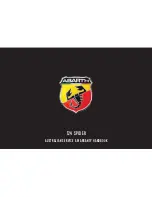
INTRODUCTION
PRELIMINAR STUDIES AND CONSIDERATIONS
MAINTENANCE AND DAMAGE PREVENTION
WORK ON BASIC VEHICLE
MOUNTING AND CONSTRUCTION
POWER TAKE-OFF
ELECTRIC AND ELECTRONIC SYSTEMS
APPENDIX
160
Body Builder Manual Part II, Specific Book LCV
V1.0, February 2015
The target is to achieve the best possible balance between the strength and rigidity
of the chassis with respect to the body on the one hand, and the maximum flexibil
-
ity and comfort of the vehicle on the other.
By combining different types of connections in different areas of the vehicle
according to requirements, it is possible to achieve a perfect coupling between the
body and chassis.
See chapter 5.3.2 "Flexible connection".
See chapter 5.3.3 "Rigid connection".
5.3.5
Self-supporting structures
Self-supporting platforms
If, on account of its own features, the supporting platform of the upper body can
assume the function of the subframe, then the subframe is not necessary.
The strength and rigidity required for the subframe must be achieved by this alter
-
native structure.
See chapter 5.2 "Subframe features and design".
Self-supporting bodies
If the body has a self-supporting structure, the installation of a subframe can be
avoided, thereby saving height. The strength and rigidity required for the subframe
must be achieved with this alternative structure.
See chapter 5.2 "Subframe features and design".
NOTICE
In this type of construction, attention should be paid to the minimum rear wheel
arches and the areas which should be free above the chassis frame.
See chapter 2.3.7 "Wheel dimensions and clearances".
NOTICE
The Body Builder will be liable for the suitability of the construction and for the
strength and rigidity of the self-supporting body.
















































